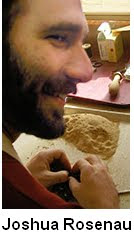
An atheist reader send me this argument for the existence of God:
Leibnizian Cosmological Arguments. It's from Alexander R. Pruss of Baylor University in Texas, USA.
Here's the guts of the argument ...
The basic Leibnizian argument has the following steps:
(1) Every contingent fact has an explanation.
(2) There is a contingent fact that includes all other contingent facts.
(3) Therefore, there is an explanation of this fact.
(4) This explanation must involve a necessary being.
(5) This necessary being is God.
My first reaction whenever I see arguments like this is to look for evidence that supports the claim.
1 I'm not very interested in arguments that hinge on the definition of words and on things that may or may not be real. What is the actual evidence that this God really exists?
What is a "contingent fact" and why should I believe that every one of them has an explanation? The article by Alexander R. Pruss tries to convince me that this belief is related to something called the Principle of Sufficient Reason (PSR) and that it is self-evident. If it's not self-evident to me, then the author tries to show that my worldview is inconsistent—in fact, I can't even believe in evolution unless I accept the Principle of Sufficient Reason and hence, that every contingent fact has an explanation! Who knew?
To me, this just seems like silly sophistry.
Similarly, I don't see any reason to believe that there is a contingent fact (whatever that is) that contains all other contingent facts. What's the point?
Even if I'm willing to consider steps 1,2, and 3 why should I conclude that something called a "necessary being" is part of the explanation?
The god of the cosmological argument is an imaginary god who exists only in the minds of philosophers. There is no connection between that imaginary "necessary being" and a god who actually does anything. If someone wants to believe in the cosmological "necessary being" then that's fine with me as long as they don't try to attribute anything else to that "necessary being" other than satisfying some unprovable premises about contingent facts.
I don't see any reason why
I should believe in this "necessary being." More importantly, I don't see how I could possibly distinguish between people who believe in the cosmological "necessary being" and those who don't, if that's the only difference between them. But let's not kid ourselves. There aren't any living theists who just stop when they get to point #5.
The cosmological arguments are just rhetorical devices for satisfying theists who have acquired a belief in God for entirely different reasons. Nobody, including theists, arrives at a belief in a Christian god—or any other personal god—via the cosmological argument. To a non believer, the entire argument looks silly no matter how much you dress it up in philosophical finery. This is not proof of the existence of god so much as
post hoc rationalization for believers.
Here's an example of the kind of reasoning you see in this "sophisticated" essay. Remember that Pruss is trying to convince us that you must accept the Principle of Sufficient Reason and that principle leads automatically to the conclusion that "Every contingent fact has an explanation."
It is morally acceptable to redirect a speeding trolley from a track on which there are five people onto a track with only one person. On the other hand, it is not right to shoot one innocent person to save five. What is the morally relevant difference between the two cases? If we denied the PSR, then we could simply say: “Who cares? Both of these moral facts are just brute facts, with no explanation.” Why, indeed, suppose that there should be some explanation of the difference in moral evaluation if we accept the denial of the PSR, and hence accept that there can be facts with no explanation at all?
Almost all moral theorists accept the supervenience of the moral on the non-moral. But without the PSR, would we really have reason to accept that? We could simply suppose brute contingent facts. In this world, torture is wrong. In that world, exactly alike in every other respect, torture is a duty. Why? No reason, just contingent brute fact.
The denial of the PSR, thus, would bring much philosophical argumentation to a standstill.
An interesting thing about this argument is that it yields a PSR not just for contingent truths but also for necessary ones.
Quite frankly, I have no idea what he's talking about and nothing said here prompts me to try harder to understand the point. He lost me in the second sentence because I think it IS right to shoot one person to save five, if that's the only choice.
I've also seen many institutions and societies that condone torture. There was at least one American President who liked the idea and in the not-too-distant past torture was good sport in the Roman Catholic Church. What has this got to do with the Principle of Sufficient Reason?
Notice that up until now I haven't even mentioned the most obvious problem with the cosmological argument; namely, that it doesn't explain anything. If there's really a problem identifying the explanation of everything then what explains god? I know that theists everywhere have elaborate excuses to explain why god falls outside of the original premises of the cosmological argument but isn't it interesting that they never explicitly include them in the argument?
Take the five steps above. There should be another statement along the lines of "(4b) This necessary being does not require an explanation because it isn't a contingent fact. This doesn't violate the Principle of Sufficient Reason because I say so."
Man, those Courtier's of the Emperor sure are clever!
1. Actually that's not quite true. My real first reaction is more like, "Holy shit! Are there really people who believe this nonsense!














